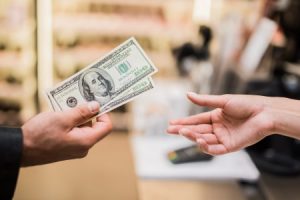
As cashless payments continue to dominate most financial transactions across the globe, the new decade may bring in new methods of payment in the United States.
The number of cashless payment options available is endless; with digital wallets, wearables, and mobile pay apps all gaining popularity across the US.
The number of Americans using cash is diminishing, according to Square, even for small purchases. In 2015, 46% of purchases under $20 were paid for in cash, compared to 37% in 2019.
The Federal Reserve also reported that over 80% of all transactions across the States are made using cashless options such as credit and debit cards, digital wallets, wearables, and other digital payment methods.
For most consumers, cashless is the easier and more efficient method of payment, as it saves having to make the extra trip to withdraw cash from an ATM. It improves the customer experience by boosting convenience. Therefore, even if a completely cashless society is still fat from being reached, there is no denying that the cashless experience is becoming more widespread, as more stores and businesses adapt to new digital methods of payment.
The Salvation Army recently announced a decision to accept mobile donations, in a bid to promote both the cashless trend and encourage consumers to donate money towards a just cause. The 2019 festive season witnessed the first time consumers could use their mobile phones, or other devices such as smart watches, to donate to the Salvation Army’s red kettle campaign, which is held annually. Consumers would simply scan a QR code using their digital device at the red kettle site, and submit a donation using either Apple or Google Pay.
Although it is unlikely that the U.S. will become a completely cashless society anytime soon, the cashless trend will continue to dominate most financial transactions, as more contactless and digital payments are developed. This will ensure the progression of new cashless technologies and solutions, while guaranteeing that those without alternative payment methods are not excluded from purchasing their day-to-day needs.
